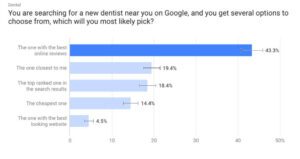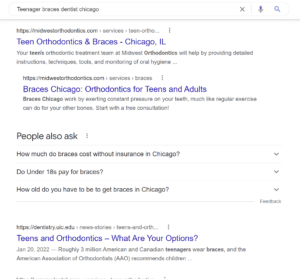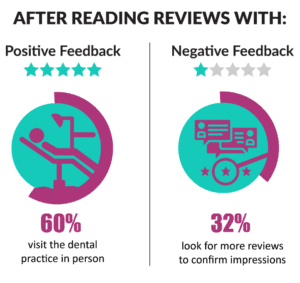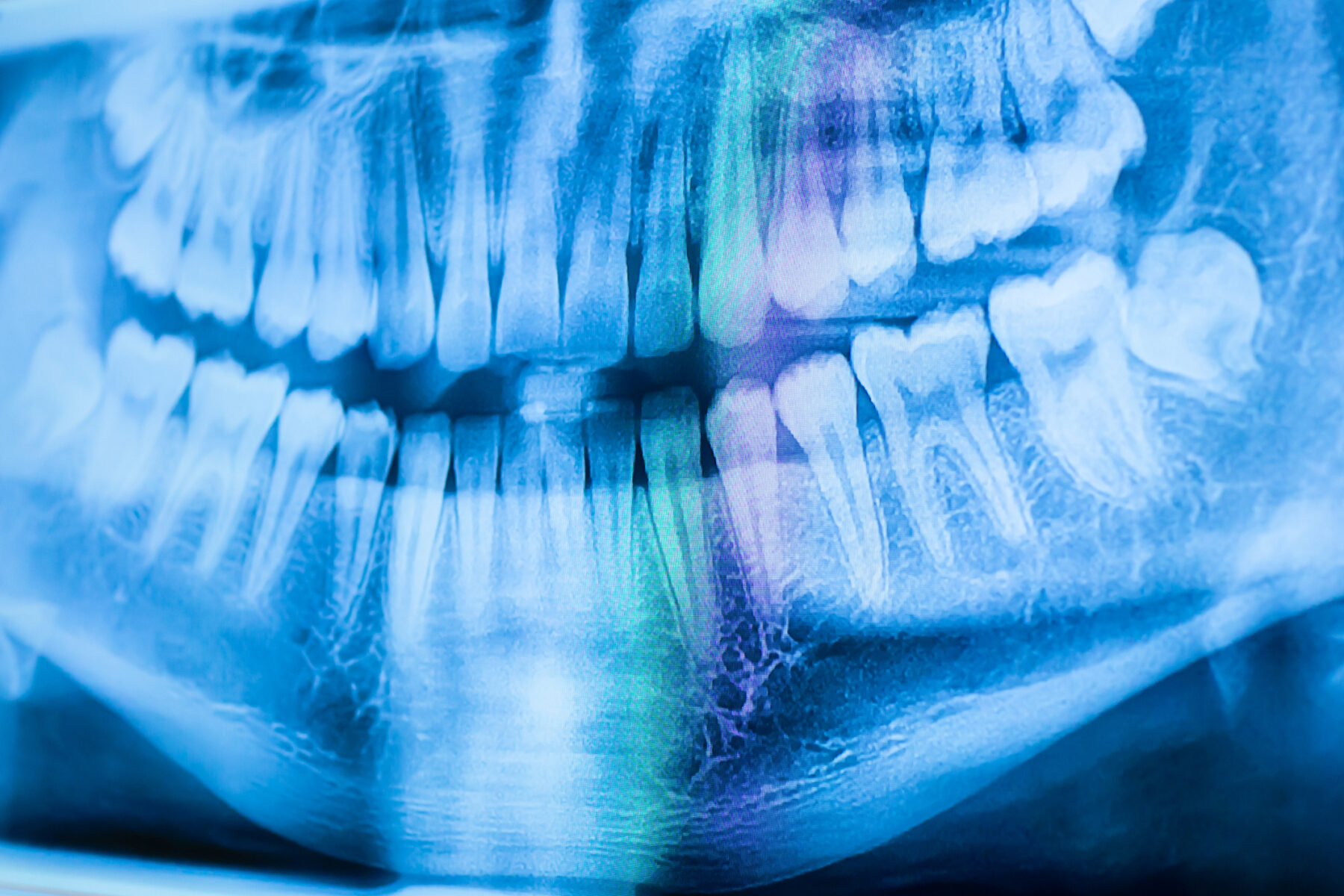Orthodontic patient acquisition is a complicated scene facing today’s conscious, selective, and demanding consumers researching their options in the vast digital world. Therefore, an effective digital marketing strategy is vital to any orthodontic service organization (OSO).
Table of Contents
- Orthodontic Marketing vs. Dental Marketing: How Are They Different?
- Local SEO for OSOs
- Brand Reputation Management
- Google Ads for Orthodontists
- Full-Funnel Orthodontic Marketing Plan
- Enhancing Lead Quality for Orthodontic Practices
- Marketing Analytics and ROI Measurement for Orthodontics
- Building a Winning Orthodontic Marketing Strategy
Today’s consumers will not hesitate to research and shop around until they find the best solution, and most of this shopping is done online. Therefore, the days of solely relying on dentist referrals are gone for OSOs. If an organization wants to thrive in today’s market, it must invest in digital marketing to boost its presence and credibility in front of its target audience.
Orthodontic Marketing vs. Dental Marketing: How Are They Different?
First, OSOs must understand that their approach to digital marketing differs from dentist offices in several aspects. Therefore, copying a DSO marketing strategy will rarely do any good for an orthodontic service provider.
1. Longer Patient Journey
Orthodontic patient acquisition is a longer and more complicated process. Like shopping for a dentist, potential OSO customers look for the best OSO possible based on recommendations, online reviews, and information on the organization’s website and social media pages. But, as with many other healthcare markets, the practitioner’s reputation and credentials substantially affect a patient’s decision.
Meanwhile, the higher cost of orthodontic surgery is another reason behind the longer patient journey. The cost also becomes a heavier burden since most insurance does not cover orthodontic surgeries, regarding them as an elective or cosmetic process.
2. The Rise of Direct-To-Consumer Orthodontic Care
Today’s OSOs face harsh competition drastically different from what they dealt with a decade ago due to the emergence of direct-to-consumer (D2C) orthodontic care, such as the well-known Smile Direct Club.
Since these companies aren’t medical practices, they also have more liberty with marketing and often utilize social media ads, influencer marketing, and other non-traditional methods to engage directly with consumers.
3. Reduced Dentist Referrals
Similarly, more dentists now offer orthodontic procedures as part of their practice. Meanwhile, traditionally, most OSOs heavily rely on their dentist referrals.
This change doesn’t mean it is no longer necessary to steer some digital marketing strategies toward a more B2B approach. However, it highlights the necessity of incorporating B2B and B2C marketing into your strategy.
As we always say, you should never put all eggs in one basket. With referrals decreasing, it is only more crucial for OSOs to be visible and convincing in front of their target audiences.
Local SEO for OSOs
Nobody enjoys driving 30 minutes home with half of their gum num. That’s how we know that dental care is a local service. The same applies to orthodontic surgeries.
And that’s why SEO, especially local SEO is a core element of orthodontic marketing strategy. A recent survey revealed that 43.3% of Americans go with the dentist with the best reviews, and 19.4% would choose the one closest to them.

This implies that an orthodontist with great reviews is more likely to be chosen, especially if they’re not too far from the patient. Also, given the specialty level of orthodontist surgeries, patients are often willing to travel further for a better provider than a dentist.
Orthodontic Local SEO best practices
One of the main reasons why D2C orthodontic providers became so popular was because they could ship kits to the consumer’s doorstep. Fortunately, plenty of patients still prefer to go to a specialist.
So, all that’s left for an OSO is presenting itself to the patients seeking a solution. The wait is over. Follow these best practices to find the most effective orthodontic marketing ideas.
Citations & Listings
List your business locations on local directories, databases, and niche directories, and link them to your website. Great places to explore include
- Community or neighborhood business directories
- Local chambers of commerce
- Your local Yellow Page
- Online review platforms like Yelp
- Promotional platforms like Groupon
While citations & listings don’t have much to do with your website SEO, they can effectively bring you in front of your target audience.
Google Business Profile (GBP) Optimization
Create a Google Business Profile (formerly called Google My Business) listing for each location you have to significantly increase your chance of being found during organic searches. Also, OSOs must choose their primary category wisely.
For example, do you identify as a dental or beauty service provider? Each category appeals to a different demographic and can significantly impact your local SEO. Finally, ensure each listing displays the correct information, appropriate images, accurate hours, and appropriate services on the profile.
Geographical Keyword Strategy
Your site-wide keywords may not be as effective for your local SEO. Therefore, a geographical keyword strategy is critical for any OSO ready to compete in today’s market.
When conducting local keyword research, focus on high-intent, low-competition keywords instead of general ones. Below are a few examples of local queries used by people actively looking for an orthodontist:
- “orthodontists chicago hyde park”
- “braces for kids near Washington D.C.”
- “Teenager braces dentist chicago”
An OSO would quickly maximize its return on local SEO by accurately identifying these geographical keywords.

Well-Optimized Location Pages
Another great orthodontic marketing idea is building well-optimized location pages following the geographical keyword strategy you just put together. Then, differentiate your content on each page to make it more location-specific.
For example, use photos of the physical branch, show reviews only for that location, and tailor your copy to the adjacent communities. You should also display the local branch address on each page and link them to your GMB listings.
Learn more about local SEO best practices for DSOs and OSOs
Brand Reputation Management
Today’s OSOs cannot succeed without a good reputation. But positive reviews go beyond just a good impression.
For one, online reviews are closely tied to local SEO, especially the ones on your GMB listings. Additionally, today’s patients rely heavily on reviews to aid them in making decisions—86% of patients would choose a dentist based on online reviews.

Furthermore, having good reviews will earn you more referrals because dentists would feel more comfortable sending patients your way. Similarly, you also get more word-of-mouth referrals with a good reputation.
Learn more about why reputation management matters for DSOs
Orthodontic Reputation Management Best Practices
There are two main pieces behind a trustworthy online reputation:
- Continue to collect positive reviews
- Handling negative reviews
For starters, talk to your regular patients. Thank them for their loyalty, and encourage them to leave a review and share their perspective. You should also invest in an automated review gathering system like BirdEye or Podium. These software programs integrate with your electronic health record systems (EHRS) and send an automated review request to patients after their appointment.
Meanwhile, provide sincere responses to negative reviews and try to find a solution offline. Don’t use a copy-paste reply. Instead, talk to the unhappy customers human-to-human. But be sensitive to the fact that you can’t reveal personal healthcare information (PHI) and must comply with HIPAA regulations.
Learn more about how to gather more positive reviews
Google Ads for Orthodontists
If you’ve invested in local SEO supported by high-intent geographical keywords, your organization will benefit significantly from PPC campaigns. By layering on Google Ads, you can dominate the Google search results page. Google Ads is a proven method to bring OSOs in front of patients actively seeking a solution.
Benefits of Google Ads for OSOs
Google ads allow you to show up on top of the SERP in front of those in urgent need of a solution. These individuals make decisions way faster and are ready to make an appointment as long as your practice looks trustworthy.
OSOs can also run campaigns targeting high-intent search terms in their targeted markets, such as the keyword examples we listed above. Google Ads also allow organizations to target dynamic keywords, such as “orthodontists near [location],” bringing leads for all your locations.
Orthodontic Google Ads Best Practices
Nonetheless, staying on Google’s friendly side with the rapidly changing algorithms could be tricky. Therefore, OSOs should follow best practices tested to be effective, especially if they’re new to running PPC campaigns.
Start by refining your keyword strategy to focus on high-intent local keywords, even if they may have lower search volumes. Those are patients ready to book an appointment now. Then, develop an organized and minimal campaigns structure to maximize ROI. Thirdly, test out
- Call campaigns vs. regular campaigns
- Versions of ad copies
- Different ad extensions
- Different ad schedules
- Different location targetings
- Promotion vs. no-promotion
Finally, always make sure your ads take patients to optimized, relevant landing pages that make it easy to convert.
Learn more about Google Ads for OSOs
Full-Funnel Orthodontic Marketing Plan
Orthodontic practices face unique challenges in patient acquisition and retention, but nothing a full-funnel marketing plan can’t solve. A full-funnel approach can help OSOs connect with potential patients throughout their decision-making journey.
Here are the key strategies to keep in mind.
1. Awareness Stage: Educating Potential Patients
At the top of the funnel, focus on creating awareness about orthodontic issues and treatments. Many people might not realize they need orthodontic care or understand the benefits of treatments like Invisalign or traditional braces.
In practice: Create informative blog posts addressing common orthodontic concerns, such as “5 Signs Your Child Might Need Braces” or “Adult Orthodontics: It’s Never Too Late for a Straight Smile.” Share these posts on social media platforms to reach a wider audience.
2. Consideration Stage: Showcasing Your Expertise
As potential patients start considering orthodontic treatment, provide them with in-depth information about various options and your practice’s unique approach.
In practice: Develop a series of video testimonials featuring patients of different ages who have undergone various treatments. Share these on your website and YouTube channel to help potential patients envision their own transformation.
3. Decision Stage: Facilitating the Choice
At this stage, make it easy for patients to choose your practice by addressing common concerns and showcasing what makes your practice stand out.
In practice: Create a comprehensive FAQ page addressing questions about insurance (very important), treatment duration, and payment plans. Include a virtual consultation option on your website, allowing potential patients to upload photos of their teeth and receive initial feedback.
4. Retention and Advocacy: Building Long-Term Relationships
After treatment, focus on retaining patients and turning them into advocates for your practice.
In practice: Implement a patient portal where clients can track their progress, schedule appointments, and access post-treatment care instructions. Send personalized emails with oral hygiene tips and reminders for retainer check-ups.
Enhancing Lead Quality for Orthodontic Practices
Are you tired of wasting time and resources on low-quality leads? By focusing on improving lead quality, you can attract patients who are more likely to start treatment and become long-term advocates for your practice. Here are five steps to get you started:
1. Evaluate Your Current Lead Generation
Examine your existing lead data to identify trends in high-quality leads. For orthodontic practices, this might include:
- Analyzing which marketing channels (e.g., Google Ads, Facebook, organic search) bring in patients who complete treatment
- Reviewing call logs to identify common questions or concerns from qualified leads
- Tracking the patient journey from initial contact to treatment completion
2. Identify Signs of Poor Lead Quality
Look for these indicators that your marketing efforts may be attracting low-quality leads:
- High volume of inquiries about services you don’t offer (e.g., general dentistry)
- Frequent mismatches between patient expectations and your treatment options
- Many leads asking about insurance you don’t accept
3. Refine Your Unique Selling Proposition (USP)
Develop a clear USP that sets your orthodontic practice apart. Consider factors such as:
- Specialized techniques or technologies (e.g., accelerated orthodontics, digital scanning)
- Flexible payment options or in-house financing
- Extended office hours or weekend appointments
Showcase your USP across all marketing channels to captivate patients who resonate with your unique approach. From your website to social media posts to payment avenues, let your distinctive strengths shine through and draw in those ideal patients.
4. Improve Ad Targeting and Creative
Create ads that speak directly to your ideal orthodontic patients. For example:
- Target parents searching for “braces for teenagers” with ads highlighting your experience with adolescent patients
- Create separate ad campaigns for Invisalign and traditional braces, each addressing the unique benefits and concerns of these treatment options
- Leverage ad copy that addresses common orthodontic pain points. A good one is “Straighten Your Smile Without Missing Work”
5. Enhance the Lead Management Processes
Implement systems to nurture and convert leads more effectively:
- Use a CRM system to track patient interactions from initial inquiry through treatment completion
- Develop email nurture sequences for different patient types (e.g., adults considering Invisalign, parents exploring early intervention for children)
- Train staff to ask qualifying questions during initial phone inquiries to ensure leads are a good fit for your practice
The answers to improving your lead quality are likely right under your nose—you just need to know where to look. Ultimately, the key to boosting your orthodontic practice’s success isn’t about churning ads because you can—it’s making the most of your existing leads and honing in on your ideal patients’ needs.
Marketing Analytics and ROI Measurement for Orthodontics
Digital marketing without data is a call for chaos. OSOs need data to provide enough visibility for informed decision-making. Comprehensive marketing analytics, real-time ROI measurement, and a smart business intelligence tools are all necessary for an organization to connect the dots and understand what marketing investments are producing a return.
Data-driven marketing best practices
Over the past few years, OSOs have employed various tools and best practices to gain insight on their marketing performance.
1. Single Source of Truth
Building a single source of truth for data is one of the most important and revolutionary business practices in the past decade. And OSOs significantly benefit from the visibility and actionability brought by congregating all data into one place.
A centralized marketing system allows an organization to
- Eliminates organizational silos
- Improves communication and work efficiency
- Allows cross-department data reviews
- Integrates and connects other systems, such as Google Ads and your CRM
2. Building a Communication-Driven Marketing Team
Today’s orthodontic groups need a comprehensive marketing team connected by seamless communication. This team develops, implements, monitors, and optimizes your organization’s online and offline marketing strategy.
Each team member is usually responsible for a different marketing piece, such as software integration, KPI tracking, reporting, etc.
3. Configuring Multiple Goals
Today’s orthodontic marketing is complex. Therefore, organizations must configure different goals for each campaign and for its long-term and short-term expectations. Then, choose the most relevant KPIs for each goal to ensure clear tracking.
4. Choosing the Right Attribution Model
Finally, data only makes sense when viewed under the correct rules. That’s why OSOs must choose the most appropriate attribution model for their campaigns.
Most common attribution models include:
- First-touch: The first-touch attribution model accredits the campaign that initiated your patient’s first interaction with your organization. It is a great method to determine where your patients first show interest.
- Last-touch: The last-touch attribution model gives all credit to the campaign that sealed the deal by tracking the final click or action on the conversion path.
- Multi-touch: The multi-touch model is often used to measure marketing effectiveness over the entire customer journey as it takes all touchpoints into consideration and then assigns fractional credit to each point accordingly.
- Linear: Unlike the multi-touch model, a linear attribution model assigns equal credit to all touchpoints to provide insights into the impact of each activity throughout the patient’s journey.
Building a Winning Orthodontic Marketing Strategy
Orthodontists face a rapidly changing landscape. On the one hand, D2C orthodontic healthcare companies push conventional OSOs to market to consumers directly. Meanwhile, decreasing dentist referrals doesn’t mean OSOs can step away from the B2B piece in their marketing strategy.
With patients strongly influenced by online reviews and geographical locations, OSOs must focus on local SEO, reputation management, PPC campaigns, full-funnel plans, and lead enhancement to build their digital marketing strategy.
Finally, it’s crucial to form a single source of truth supported by real-time ROI measurement so an organization can make prompt and informed marketing decisions.

